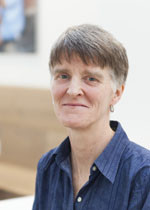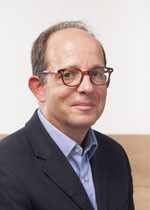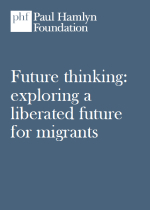Jeanette Winterson’s keynote speech: Awards for Artists 2015
Tonight we were honoured to welcome Jeanette Winterson OBE as keynote speaker for Awards for Artists 2015. Her words were truly inspiring.
Two things happened this week that bear upon this evening and these awards.
First, the Modigliani—Reclining Nude—sold at Christie’s New York for $170million. The second highest price ever paid for a painting. Picasso still holds the record for Women of Algiers. The Modigliani was bought by a Chinese collector.
I could talk about women, I could talk about nudes, money sex, power, and I could talk about China buying the West, but instead I’d like to talk about value—and bring you the second happening of the week—right here in London.
Southwark Council turned down the application from Rohan Silva of Second Home in Spitalfields (that’s the entrepreneur and creative hub on Hanbury St) and Hannah Barry, the founder of Bold Tendencies, to create 800 artists spaces in an old multi-storey carpark in Peckham where Bold Tendencies has been working for years doing events and pop-ups. Their scheme had the backing of Tate Modern and the Serpentine, and promised jobs as well as art. It was a good scheme but the Council preferred Pop Community Ltd – a Mayfair property developer, with a hip name hiding the usual aim – Make More Money.
They will allocate 50 studio spaces. The Council spokesperson said that they didn’t want a ‘closed artist commune’—whatever that is.
We live in a mad world my masters. On the one hand a Chinese tycoon pays over £100 million for an elongated nude painted by a man who died penniless in Paris at 35. On the other hand London is so expensive that artists have nowhere to work, and when a chance like Bold Home comes along, the Council that has the power to change things runs behind the net curtains and says it doesn’t want a commune—whatever that is
Thank every god you can think of for the Paul Hamlyn Foundation.
I wish that Chinese tycoon had gifted his £170 million to an arts foundation providing space for artists to work. I wish we had a tax of 1% on art sales—and by that I mean 1% on the buyer and 1% on the seller, and 1% on the auction house or gallery commission. And use the money to fund art spaces—to buy buildings across the world to be held in trust and kept in perpetuity as working spaces—the problem being, as you know, that all those run down wharves and warehouses, factories and lock-ups, are being turned into residential property for people who live somewhere else.
A friend of mine who is a cheerful semi-struggling writer said Greece was bound to recover because as it is now cheaper to live in Athens than Berlin, all his friends are moving. So maybe history will come full circle and the Greeks will get all the artists and thinkers again.
Musicians, I am not leaving you out of this story—because this is a story about value. I wrote a book a long time ago called The Passion—and there’s a line in there that says ‘What You Risk Reveals What You Value’.
I think a lot of people would agree we’ve got our values all wrong. Everybody needs a decent place to live, an education that inspires their mind, work that is either interesting or at least a means to an end without having to be a zero hours non-union bullshit job. Some safety, some security, yet, all over the world those ordinary things don’t happen or are becoming scarce—and the planet goes on paying the price of our bad management and lack of vision.
I look around and I see arts funding cut everywhere—and I am sure there will be more bad news in the Chancellor’s autumn statement on 25 November. At every point, arts leaders are asked to make the economic case for the arts—a case that is easy to make because the numbers add up—but we are more hesitant when it comes to talking about the centrality of art in everyone’s lives—which is really about a re-alignment of values.
It’s that age-old question: Who am I? What is my life? Questions of identity and meaning that never go away—and get harder to answer when the answer seems to be—make money or you are a failure.
If artists ever worried about that there would be no artists. Yes, the art market has been captured by capitalism—it always was—those Popes and Princes commissioning art were buyers and sellers too. We seem to like it that things that don’t cost much to produce and aren’t made of diamonds—unless your name is Damien—cost money in the market place. Modigliani swapped his pictures for food and lodgings—that’s what they seemed to be worth then—now we think they’re worth more than £100 million.
Which is right? Neither. A work of art—a piece of music, that theatre play, that book, that installation you see today gone tomorrow, is worth nothing and everything. It is because we have no way of valuing these things that the sums are always ridiculous—too small, too big, see-sawing round in the only currency we understand—money.
But it is important for all of who work in the arts in our various ways, and those of us who love art in our various ways, to remember that the value of art is always representational—it’s about something else.
The huge price tag visual art attracts and the way we fetishise it—the shrine-like nature of galleries, the flocks of people coming to look and the secretive bespoke private views, these things are clues—not to what money can buy, but to what money can’t buy. The higher the price the more desperate we are to possess this thing that money can’t buy. Superficially it is about status and wealth, but beneath all of that is the strange and magic and talisman-like presence of art.
In this object—we think—must be some truth that we are missing—or that we can get near to by getting to the work of art.
What, after all, is this thing called art? Now that music is streamed and need not be contained in object form, we have a clue to the strangeness of the experience called art.
Let’s go back to 1905 when Einstein published a paper about the equivalence of mass and energy—and that famous equation E=Mc2.
Mass—the solid reliable knowable stuff of 3D objects and Newtonian physics, turned out to be that fluctuating, charged, playful and unpredictable thing called energy. The atom was not the building block of matter—it wasn’t a block at all. It was made of empty space and points of light. Yes, those Impressionists and Pointillists knew a thing or two.It was as if the universe was revealing herself—her structure, her nature, her disguise: Mass.
Think of all that 19c century massiveness—the civic buildings, the stove pipe hats, the factories, the engines, the cogs the size of cathedrals, chains like things forged by giants—iron ships like Titanic—but it was all sinking back, rather like Wagner’s Rhinemaiden’s gold into the flux of life, which looked more like water or light than anything solid at all. That’s what Turner understood intuitively. Art is always waiting for science to catch up.
Religion has always spoken of the body as a cloak or a garment and of this world—this toytown world we love and hate in equal measure—is an illusion. It’s not an illusion but it isn’t the whole story either. We sense that life has an inside as well as an outside—that our imagination, dreams, ideas, are all invisible until we give them some visible form. We create so that other people can see the invisible. Music begins in the silent space of the mind but we invented instruments so that what is in my mind can reach your ears and your heart. Yes, always the heart. Art is nothing if we can’t feel it.
The strange experience we call art is how we bridge the gap between the material and the non-material. Between the everyday life of busyness and doing, and the inner life, so personal, so necessary, so hard to place or find space for in the 24/7 mania of competition and failure.
This struggle between what is seen and what is invisible—between the 3D world of sense-experience and the anti-matter world of what cannot be proved empirically, is the never resolved, unresolvable struggle that art throws in our faces. That art tries to solve by revealing in forms we can manage—shapes, colours, sounds, light—the overwhelming totality of consciousness. We know we only use a tiny percentage of our brains; neuroscience is just beginning to understand how vast and weird consciousness is. The composer Sir John Tavener talked about this vast consciousness of ours and tried to reveal it through his music. But artists understand and articulate the situation in different ways. So many ways. None right or wrong; all clues towards a bigger life.
Art is energy. That’s why contact with art makes us feel better. Art isn’t some Sunday afternoon pursuit invented by the middle classes with leisure and money. Painting happened on cave walls. Music and story-telling happened round small fires in dark woods. Listen, a woman is singing. Look, a man has left a carving. Walk 20 miles to an unheated room to hear a quartet. The original Globe theatre packed in 3,300 people. Covent Garden is 2,200. Art is democratic. For everybody.
And people say, ‘Art doesn’t feed the hungry or stop wars. Art doesn’t build hospitals’. It’s a matter of priorities.
Yes it is. The acute problems of our world—war, poverty, mental illness, social injustice—are symptoms of the chronic problem of our values. We value profit over people. It really is as simple as that.
But art—no matter how much it sells for—no matter how it is co-opted by the rich as a status symbol—is always and everywhere about the human condition. The Who Am I? What am I? And always about the essential creativity of human beings.
The Greeks had a word for it —Temenos, a sacred space perhaps a spring or a well or a grove—where you could meet the god. This temenos was a virtual space as well as a physical space; you could inhabit it in your mind. It became a meditative space.
Art is that meditative space. That temenos. Sometimes as an object—but essentially as an experience. You can buy it, but actually it is what can’t be bought. It is outside of the circle of getting and spending.
Paul Hamlyn understood that. He gave his money to support the invisible world that needs to be made visible every day. And at a time when migrants are being vilified in the press, and when this government and their right-wing press are pretending that immigration is the reason for every possible problem in the UK. When UKIP polled a share of the vote entirely on the back of Fortress Britain, let’s remember that Paul Hamlyn, the German Jew, came to Britain, built a business, and he is why we are here tonight.
Honour his legacy by doing what he wanted you to do—make things, create things, be bold in your vision.
And if you make any money—give some back.


